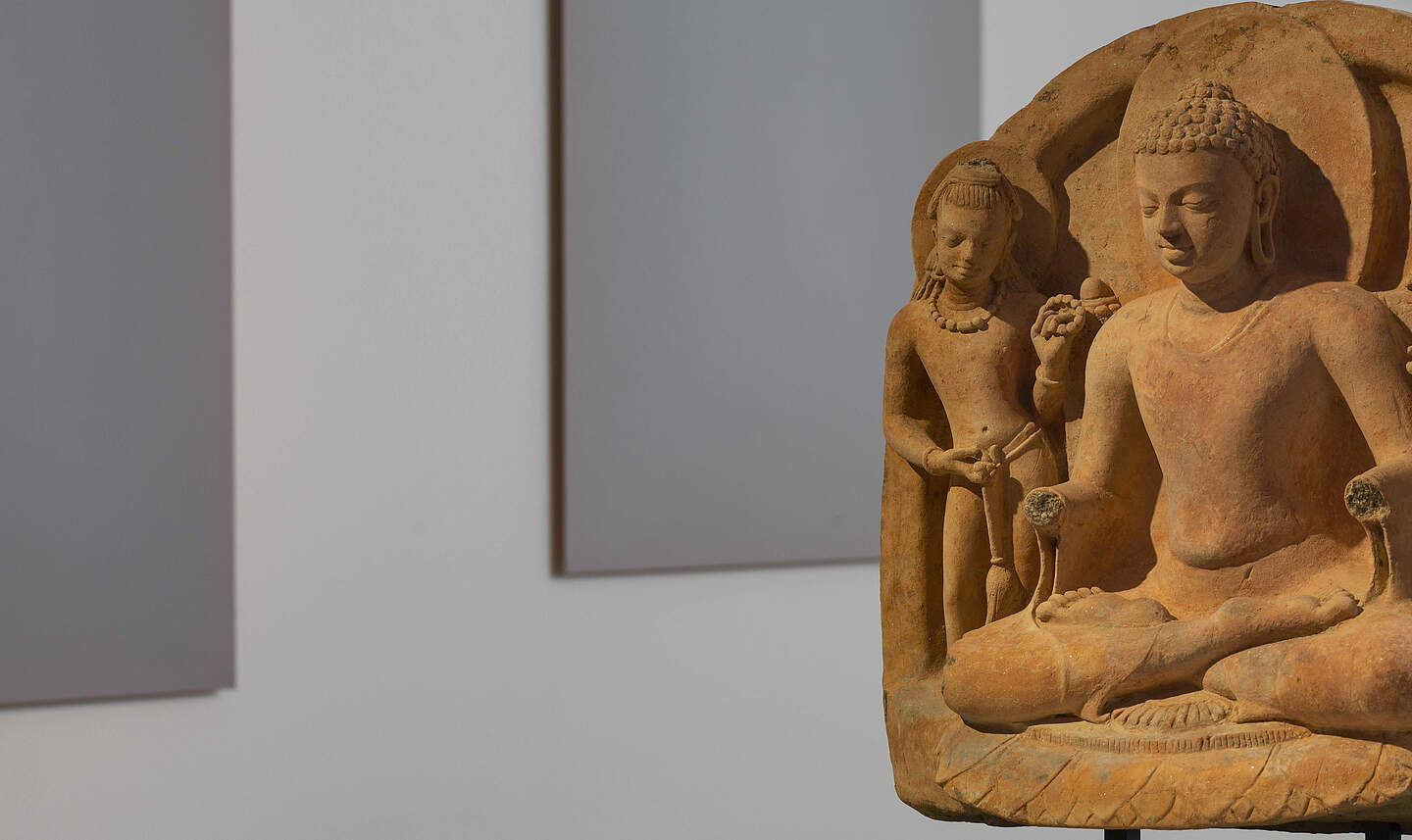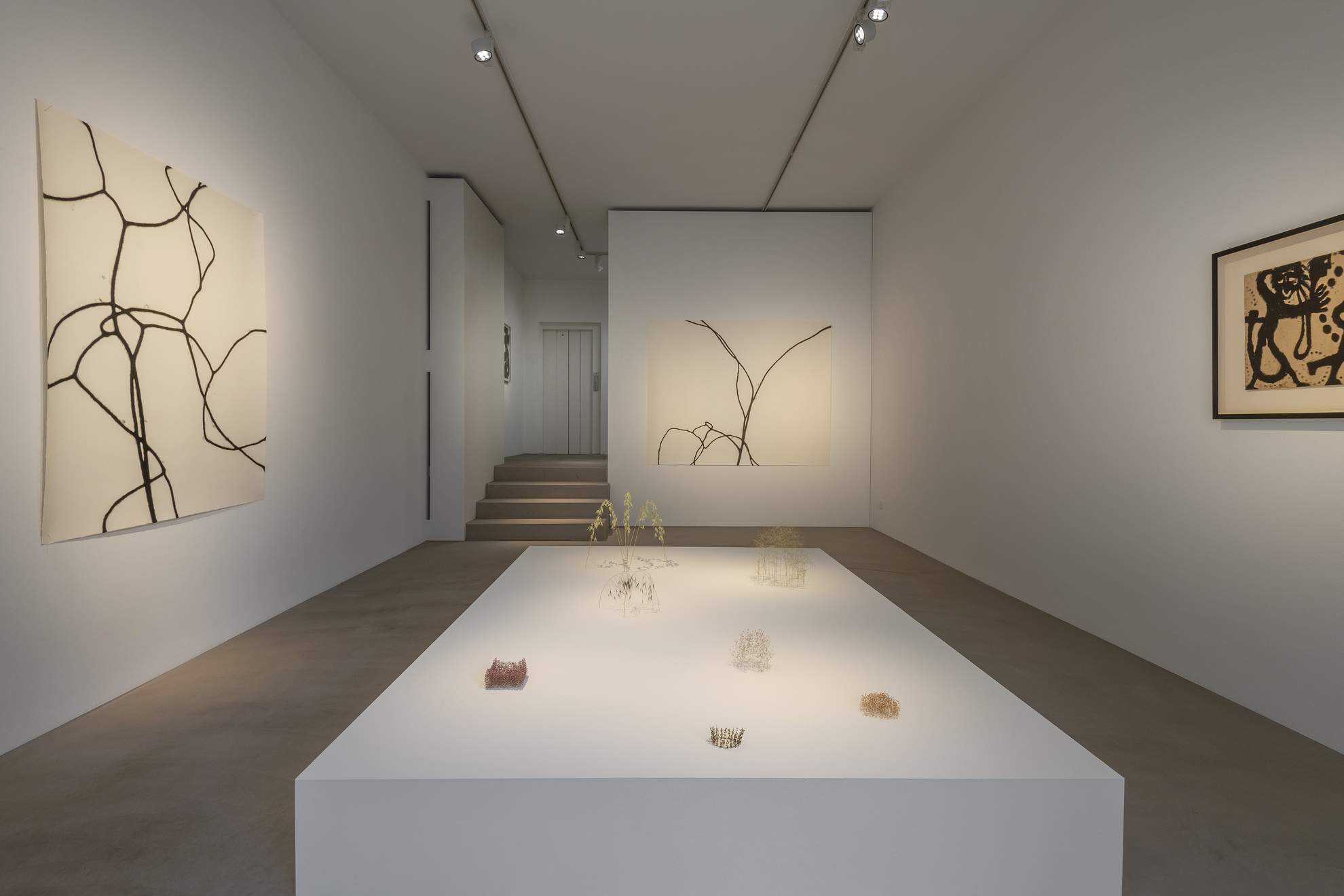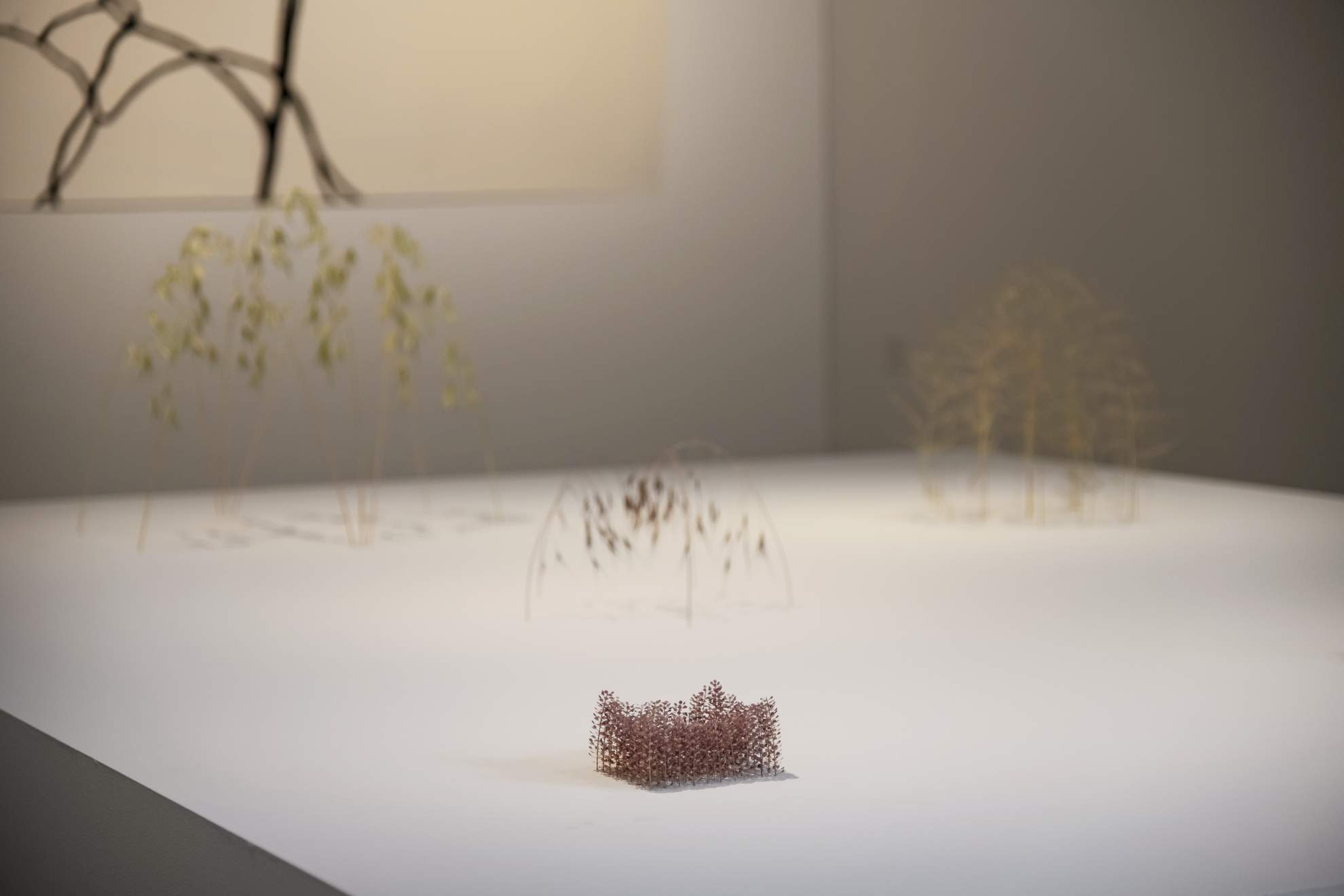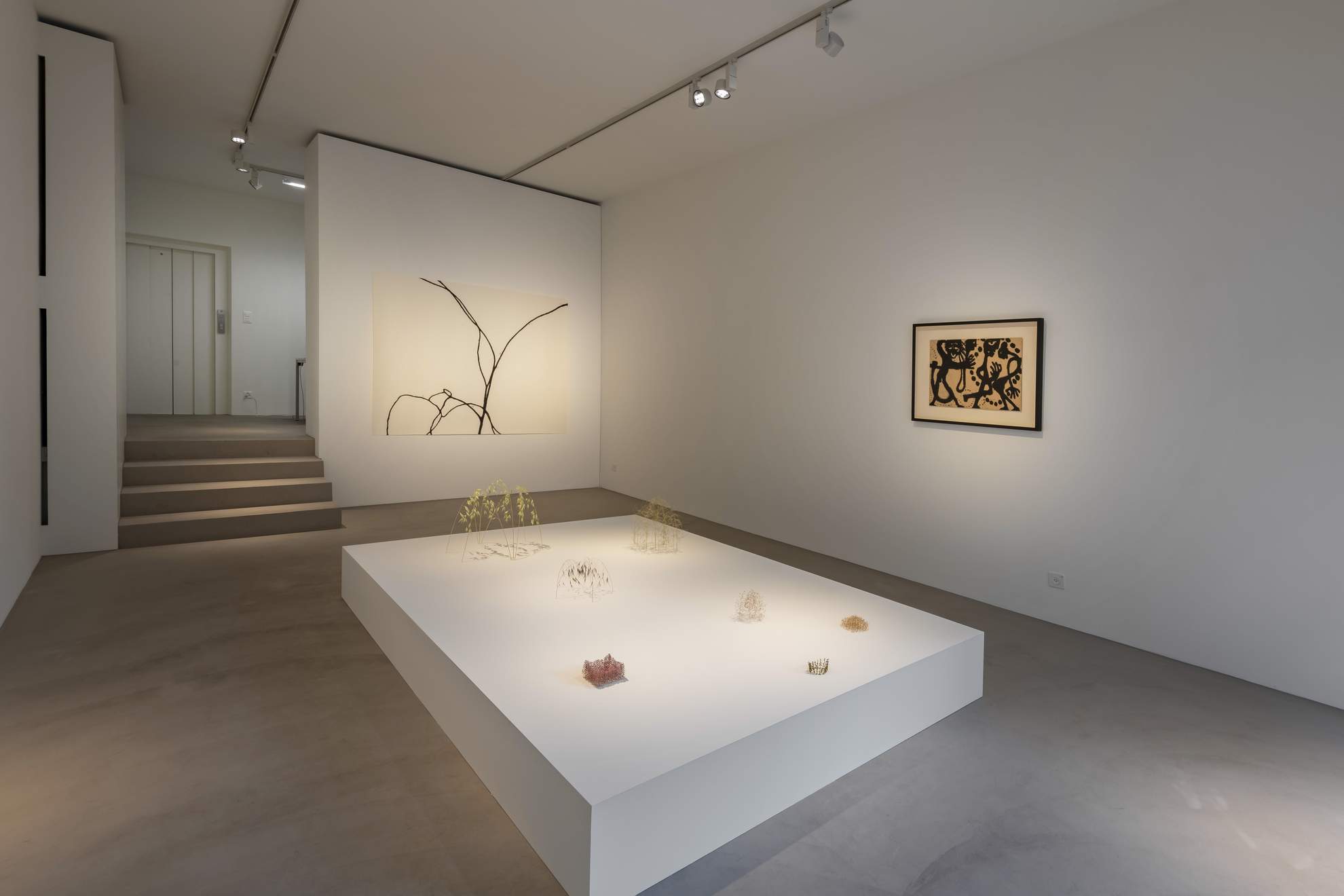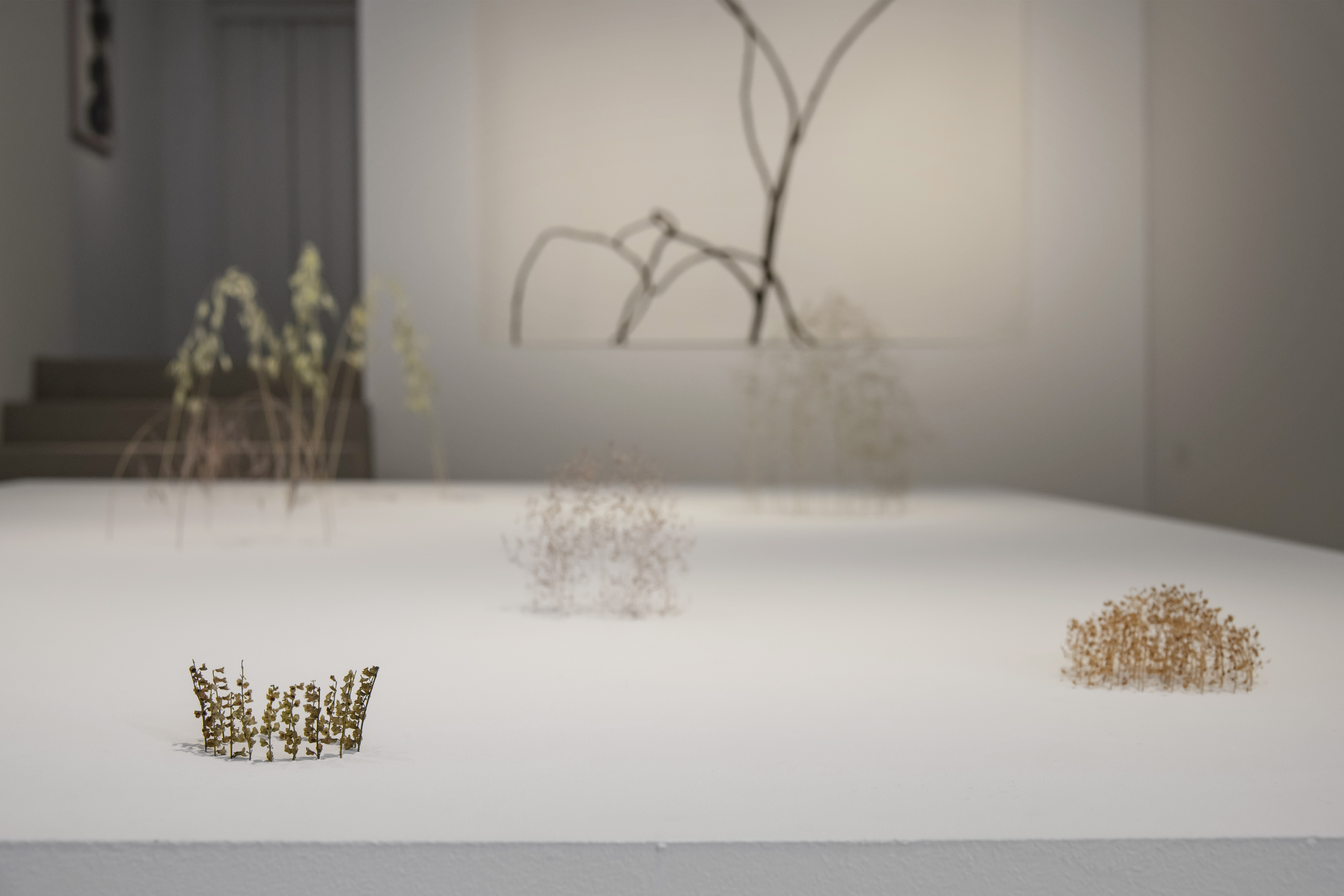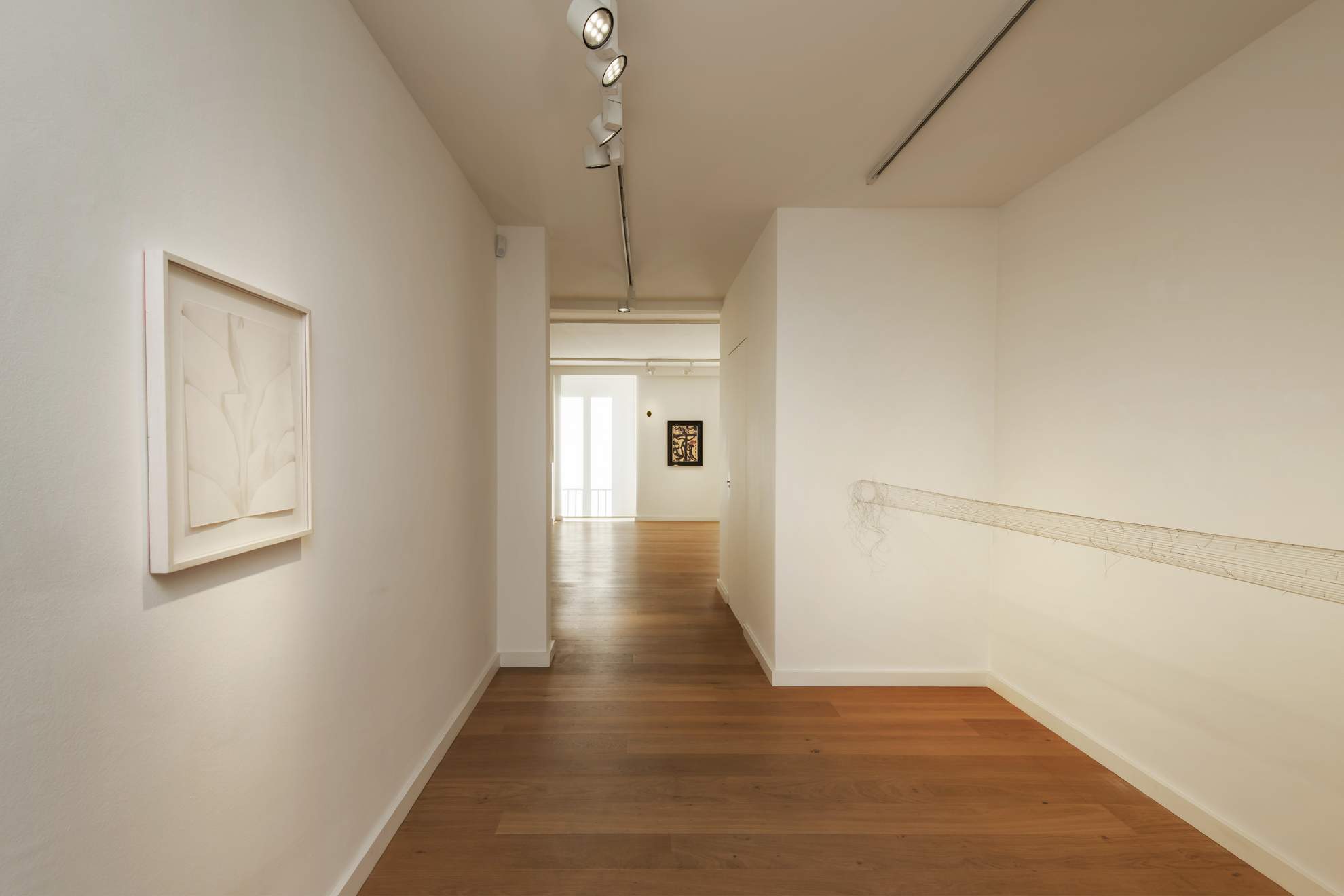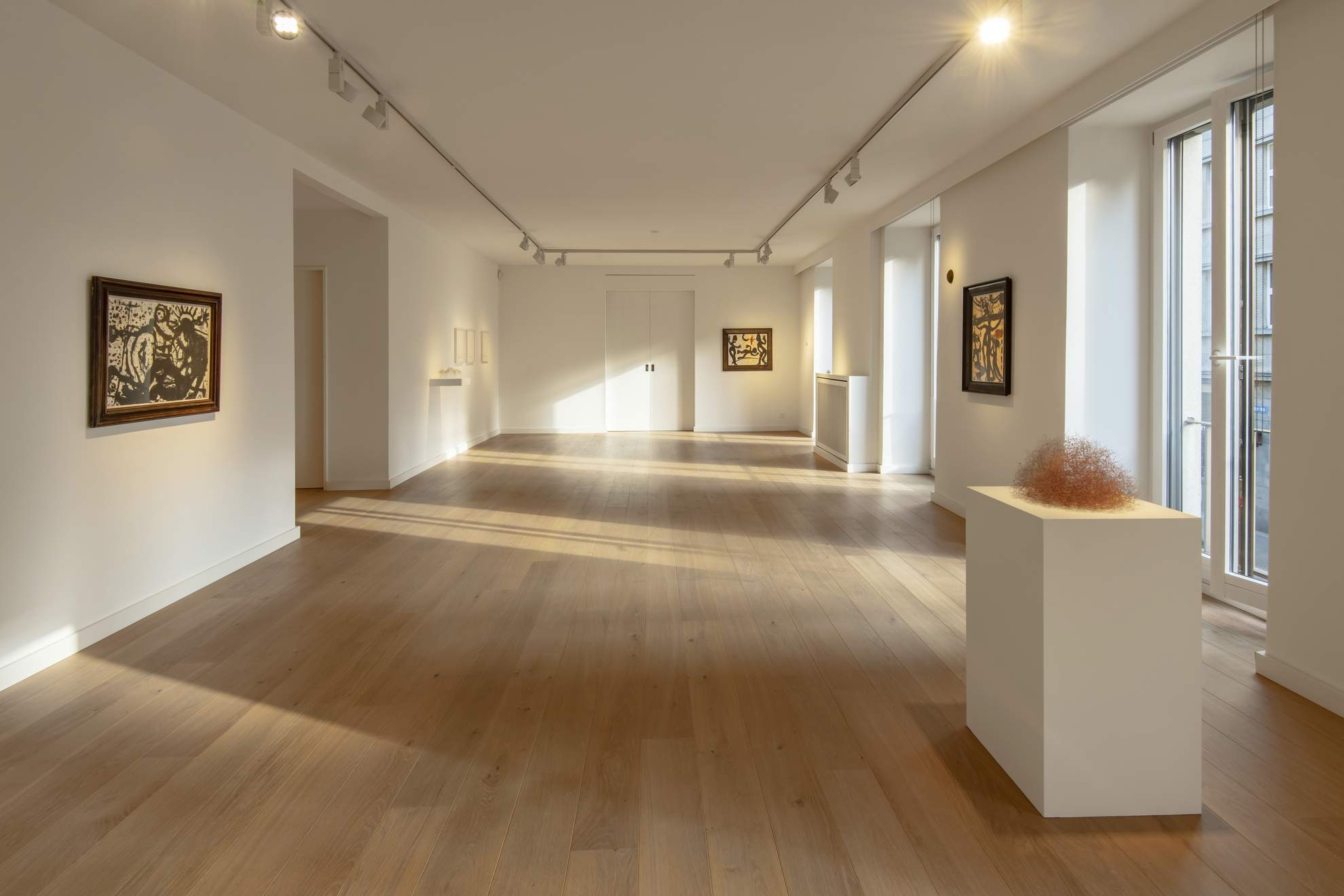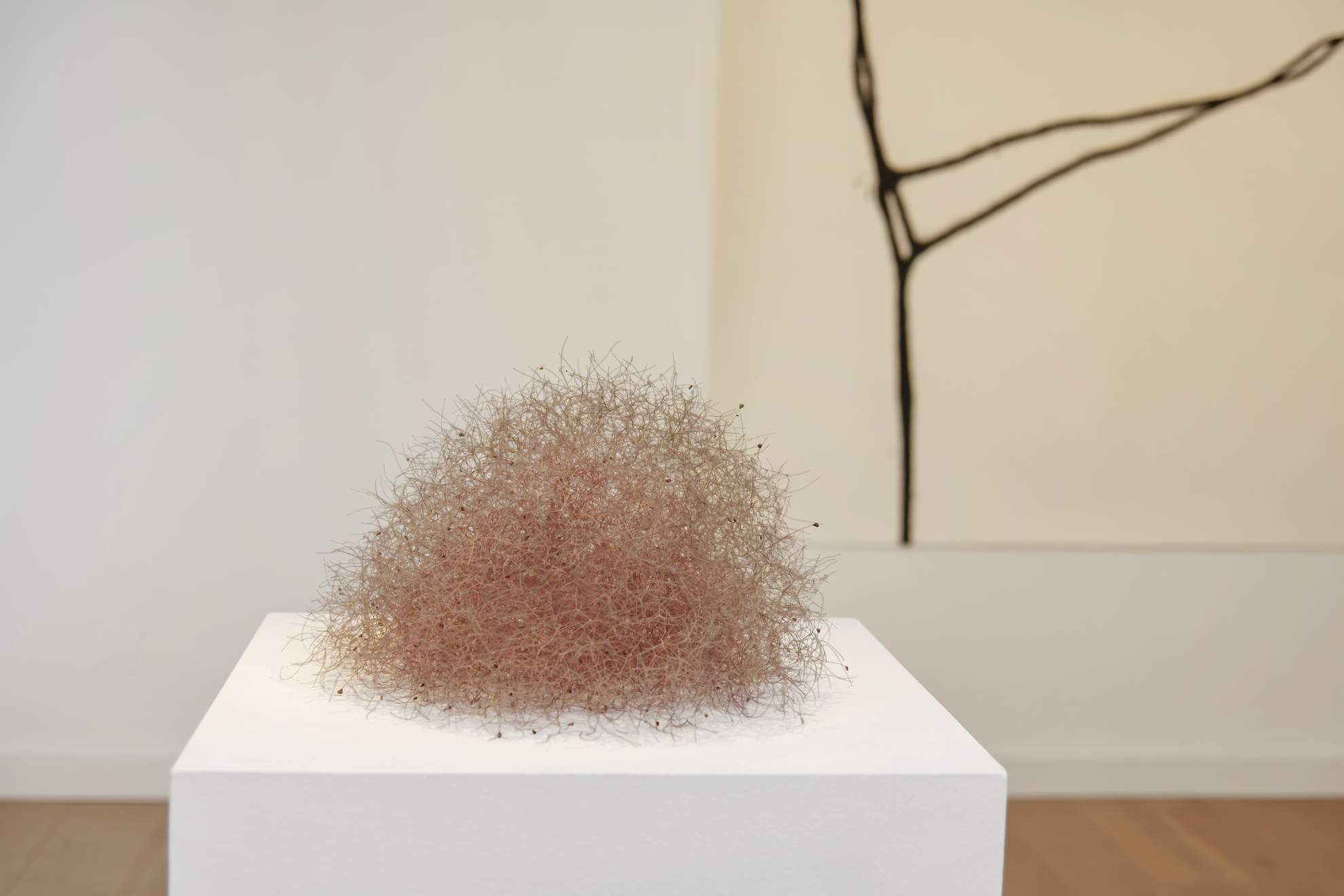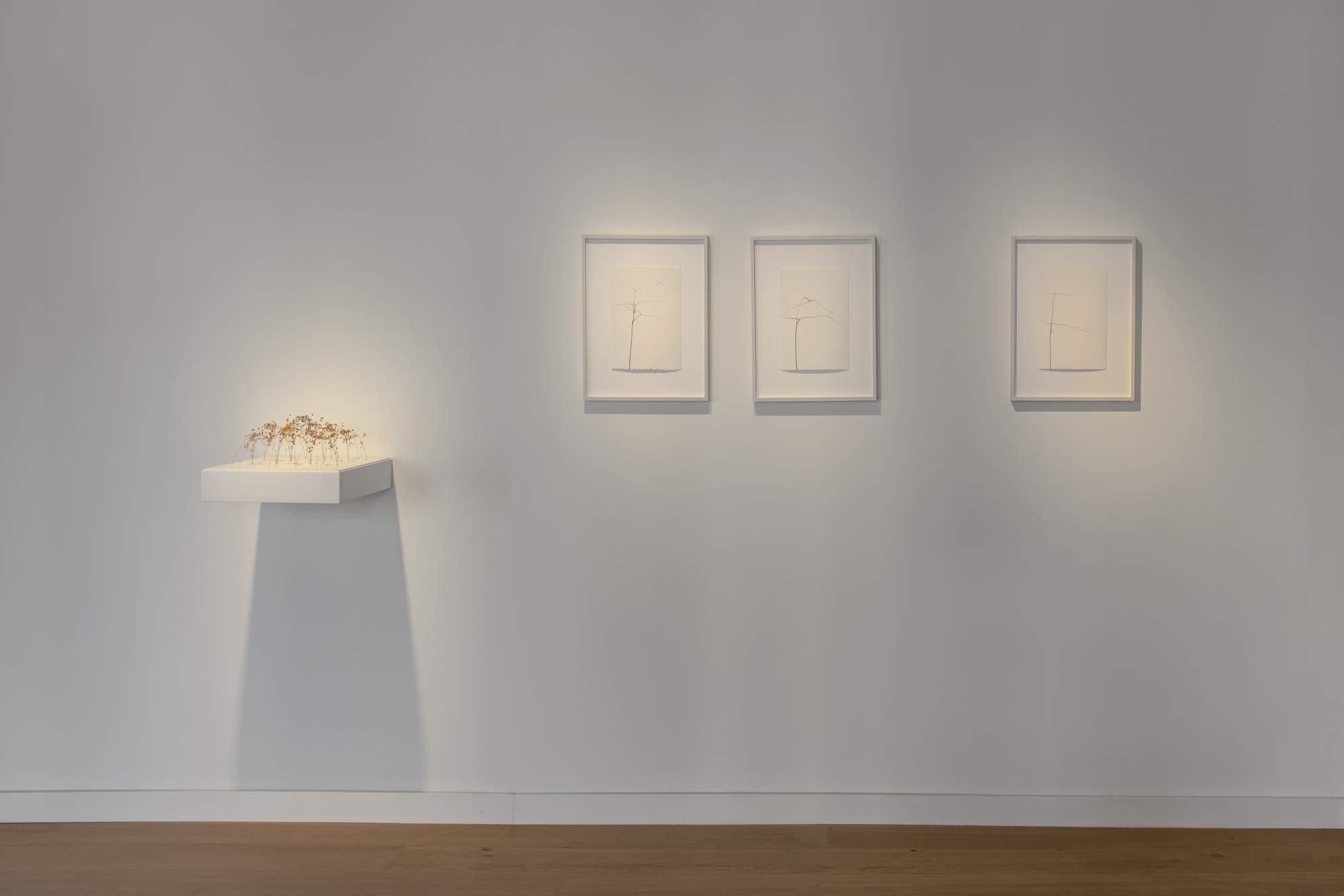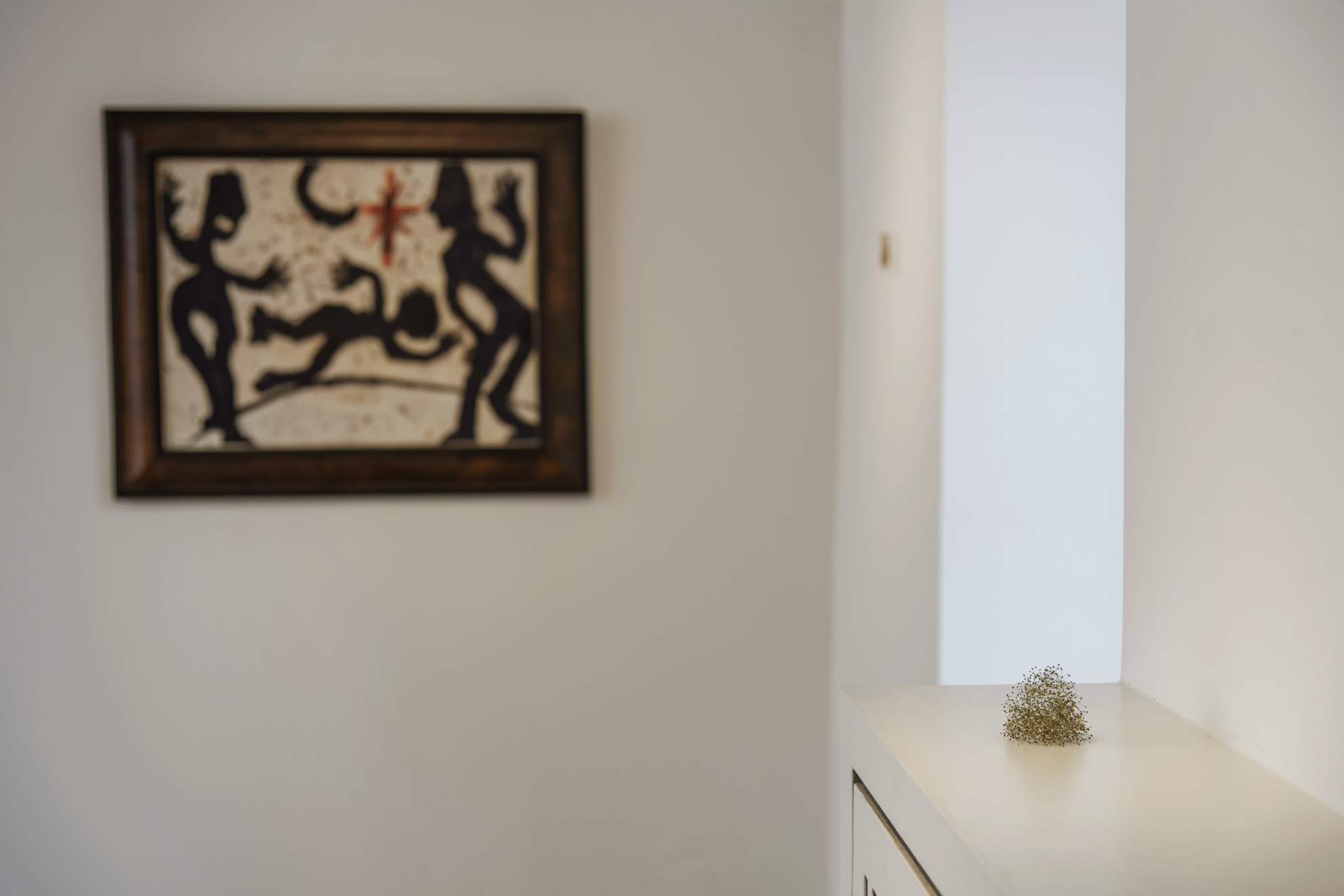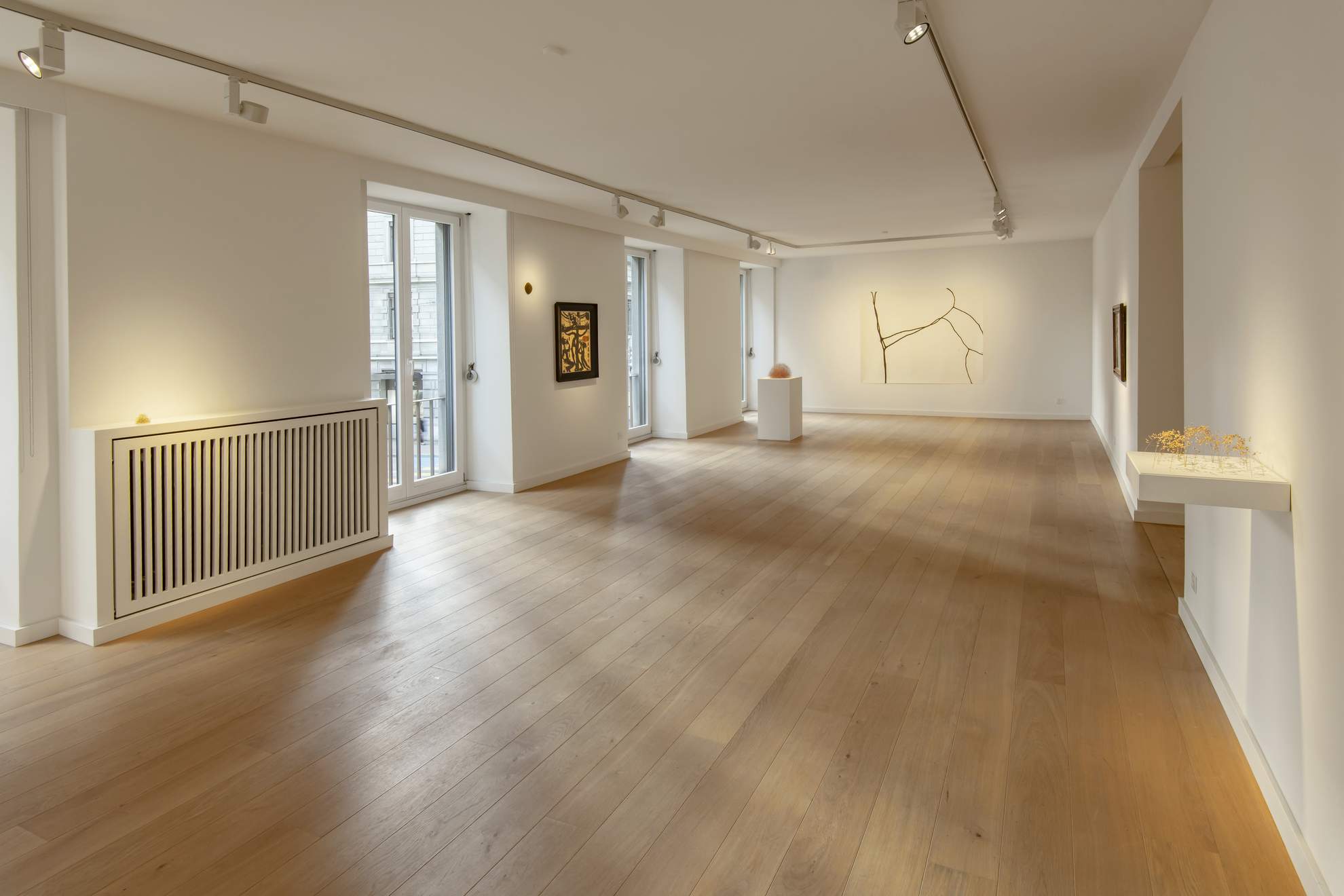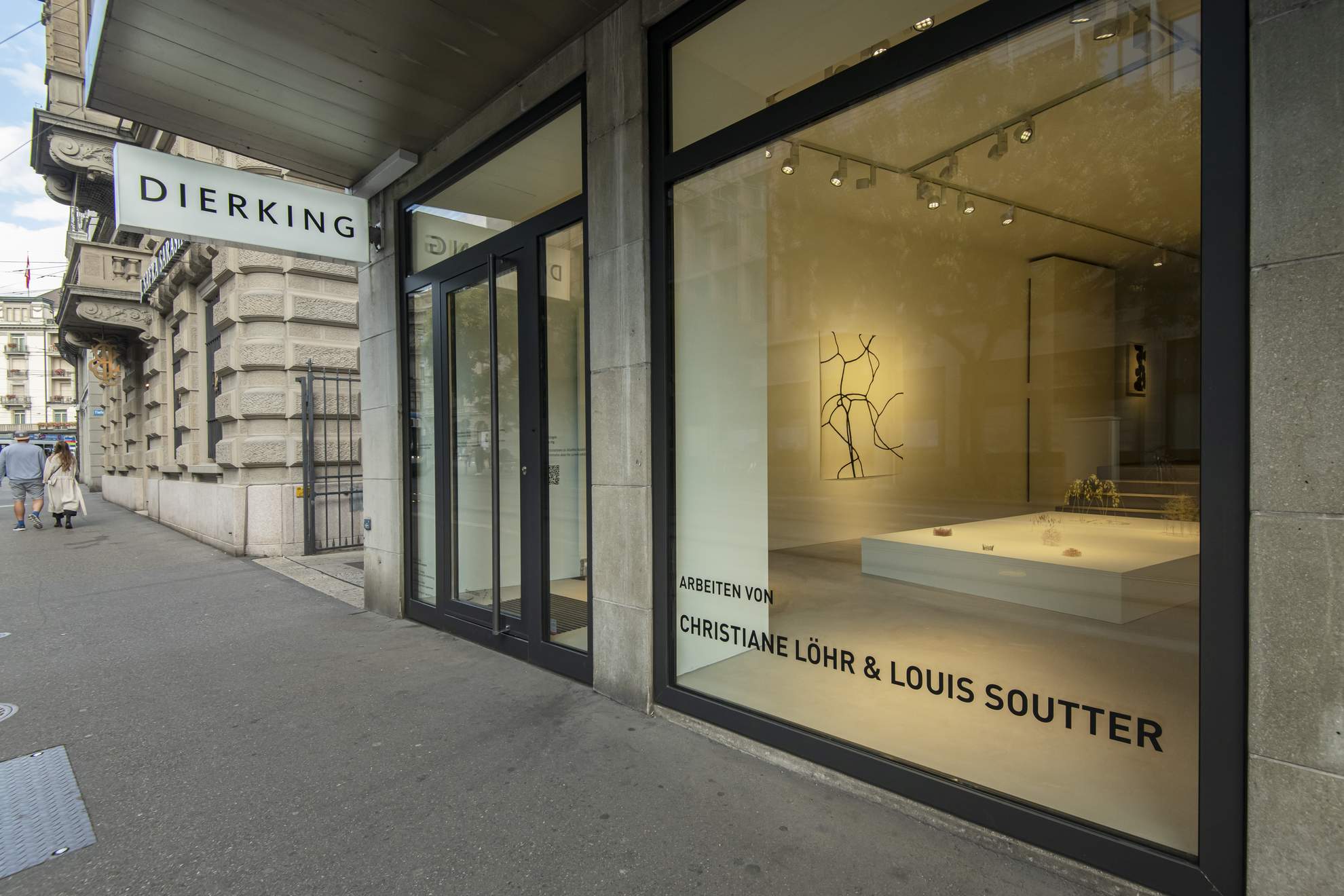
Works by Christiane Löhr & Louis Soutter
-
A new, quite distinct, fanciful, fascinating small world opens up – extremely fine, fragile, incredibly light sculptures constructed to perfection from organic components such as seeds, stems, blossoms and leaves, and amassed in the empty space. These are landscapes produced artificially by new arrangements of materials that could not be more natural. German sculptor Christiane Löhr takes her material from the natural world and uses it out of context to form new, authentic structures.
I let myself be guided by the material;
this is how I arrive at the form.
It's always a question of form-finding,
and the process comes through the specific material.
Basically, friction takes place between
the material and the work.
Christiane Löhr
"[...] we can view Christiane Löhr's entire sculptural œuvre as an archipelago of perfect, untouched islands. Models of the highest order and consummate proportion, unique, rare worlds, reflecting the pleasures of a pre-industrial civilisation where the natural world was still at the centre of all life processes, when these were not yet subject to the laws of production and reproducibility, but based on authenticity."
There could hardly be more telling words to describe her works. Germano Celant, recently deceased critic, curator and author of the manifesto of arte povera, wrote to that effect in his monograph on the artist, published in 2020. The art historian places Löhr in an art-historical context by mentioning names such as Joel Shapiro, Donald Judd or Tony Smith, their minimalist abstraction and the change of perspective from macro- to microcosm, with particular emphasis on the aspect of getting over Land Art with its monumentalising manifestations.
A master-class student under Jannis Kounellis at the Düsseldorf Art Academy, Löhr has been working with organic materials since the 1990s. She creates highly detailed new works which are not mimesis, but which rather represent formal objects. In their reduced – one might venture to say radically minimised – style, they almost demonstrate the absence of landscape. Their inner context, says Celant, shifts from nature to the narrative and symbolic, from the physical to the metaphysical, from the actual place to the artificial scenery. Thus nature is reclaimed in its symbolic dimension, that of a sacred, numinous, philosophical narrative.
Christiane Löhr works from the centre outwards to the periphery. In her working method, she herself recognises parallels with perhaps Gothic or Hindu sacred architecture, which builds around a central element, so that "faith assumes form [...] as though an idea has materialised. This corresponds to the gesture of an artist."
"I let myself be guided by the material; this is how I arrive at the form. It's always a question of form-finding, and the process comes through the specific material. Basically, friction takes place between the material and the work."
In Löhr's drawings, too, the organic reference is evident. The oil stick lines, which seem to run out over the edges of the paper, drift apart, meet again, bunch together, taper and thicken. They divide the surface into fields, and although the drawings are abstract, they give the viewer the impression of looking through branches. Similarly, in drawings by American minimalists such as Brice Marden or Ellsworth Kelly, abstract plant studies form part of their œuvres. Although in Löhr's works nature appears to be determined by man, Celant's placing of her sculptural œuvre may be applied equally to her drawings.
In 2018, the Swiss Graphic Society commissioned three works on paper from Löhr. After the solo exhibition at Kunsthaus Baselland in 2016, Christiane Löhr's works are now shown again in Switzerland for the first time.
In the exhibition on the Paradeplatz in Zurich, sculptures and works on paper are combined with finger-paintings by Louis Soutter. Any similarities lie purely in the aesthetic intensity of their respective styles, arising from a parallel in the application of the paint; both artists use their fingers to form the strong lines on the paper, resulting in a resemblance in dynamism and gesture which might be termed haptic. Löhr rubs the oil stick into the paper fibres with her fingers, whereas from 1937 onwards, Soutter made his famous finger-paintings by applying ink and gouache directly on to the paper, the colour changing in quality according to the pressure of his fingers.
The Haus am Waldsee in Berlin recently hosted a solo exhibition entitled Christiane Löhr. Ordnung der Wildnis (Order of the Wild). Currently Christiane Löhr is featured in the anniversary exhibition at the Staatliche Kunsthalle Karlsruhe Inventing Nature. Plants in the Arts (until October 31, 2021). At the end of 2020 a comprehensive monograph on the artist's work was published by Hatje Cantz.
We are particularly pleased to be able to realize this exhibition together with Christiane Löhr on the occasion of Louis Soutter's 150th birthday.
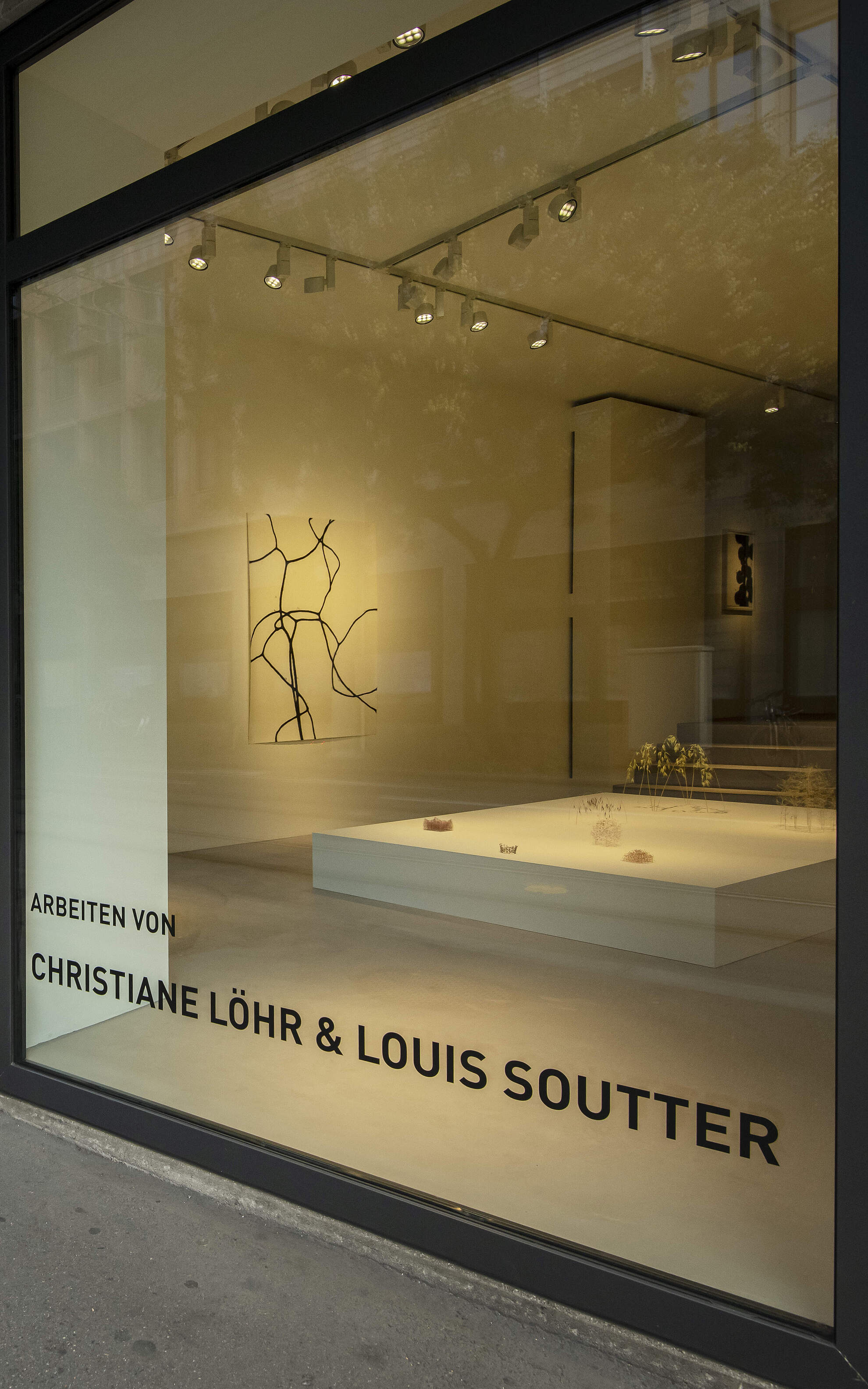
Works by Christiane Löhr & Louis Soutter
-
I let myself be guided by the material;
this is how I arrive at the form.
It's always a question of form-finding,
and the process comes through the specific material.
Basically, friction takes place between
the material and the work.
Christiane Löhr
A new, quite distinct, fanciful, fascinating small world opens up – extremely fine, fragile, incredibly light sculptures constructed to perfection from organic components such as seeds, stems, blossoms and leaves, and amassed in the empty space. These are landscapes produced artificially by new arrangements of materials that could not be more natural. German sculptor Christiane Löhr takes her material from the natural world and uses it out of context to form new, authentic structures.
"[...] we can view Christiane Löhr's entire sculptural œuvre as an archipelago of perfect, untouched islands. Models of the highest order and consummate proportion, unique, rare worlds, reflecting the pleasures of a pre-industrial civilisation where the natural world was still at the centre of all life processes, when these were not yet subject to the laws of production and reproducibility, but based on authenticity."
There could hardly be more telling words to describe her works. Germano Celant, recently deceased critic, curator and author of the manifesto of arte povera, wrote to that effect in his monograph on the artist, published in 2020. The art historian places Löhr in an art-historical context by mentioning names such as Joel Shapiro, Donald Judd or Tony Smith, their minimalist abstraction and the change of perspective from macro- to microcosm, with particular emphasis on the aspect of getting over Land Art with its monumentalising manifestations.
A master-class student under Jannis Kounellis at the Düsseldorf Art Academy, Löhr has been working with organic materials since the 1990s. She creates highly detailed new works which are not mimesis, but which rather represent formal objects. In their reduced – one might venture to say radically minimised – style, they almost demonstrate the absence of landscape. Their inner context, says Celant, shifts from nature to the narrative and symbolic, from the physical to the metaphysical, from the actual place to the artificial scenery. Thus nature is reclaimed in its symbolic dimension, that of a sacred, numinous, philosophical narrative.
Christiane Löhr works from the centre outwards to the periphery. In her working method, she herself recognises parallels with perhaps Gothic or Hindu sacred architecture, which builds around a central element, so that "faith assumes form [...] as though an idea has materialised. This corresponds to the gesture of an artist."
"I let myself be guided by the material; this is how I arrive at the form. It's always a question of form-finding, and the process comes through the specific material. Basically, friction takes place between the material and the work."
In Löhr's drawings, too, the organic reference is evident. The oil stick lines, which seem to run out over the edges of the paper, drift apart, meet again, bunch together, taper and thicken. They divide the surface into fields, and although the drawings are abstract, they give the viewer the impression of looking through branches. Similarly, in drawings by American minimalists such as Brice Marden or Ellsworth Kelly, abstract plant studies form part of their œuvres. Although in Löhr's works nature appears to be determined by man, Celant's placing of her sculptural œuvre may be applied equally to her drawings.
In 2018, the Swiss Graphic Society commissioned three works on paper from Löhr. After the solo exhibition at Kunsthaus Baselland in 2016, Christiane Löhr's works are now shown again in Switzerland for the first time.
In the exhibition on the Paradeplatz in Zurich, sculptures and works on paper are combined with finger-paintings by Louis Soutter. Any similarities lie purely in the aesthetic intensity of their respective styles, arising from a parallel in the application of the paint; both artists use their fingers to form the strong lines on the paper, resulting in a resemblance in dynamism and gesture which might be termed haptic. Löhr rubs the oil stick into the paper fibres with her fingers, whereas from 1937 onwards, Soutter made his famous finger-paintings by applying ink and gouache directly on to the paper, the colour changing in quality according to the pressure of his fingers.
The Haus am Waldsee in Berlin recently hosted a solo exhibition entitled Christiane Löhr. Ordnung der Wildnis (Order of the Wild). Currently Christiane Löhr is featured in the anniversary exhibition at the Staatliche Kunsthalle Karlsruhe Inventing Nature. Plants in the Arts (until October 31, 2021). At the end of 2020 a comprehensive monograph on the artist's work was published by Hatje Cantz.
We are particularly pleased to be able to realize this exhibition together with Christiane Löhr on the occasion of Louis Soutter's 150th birthday.
IMPRINT
© DIERKING 2025
